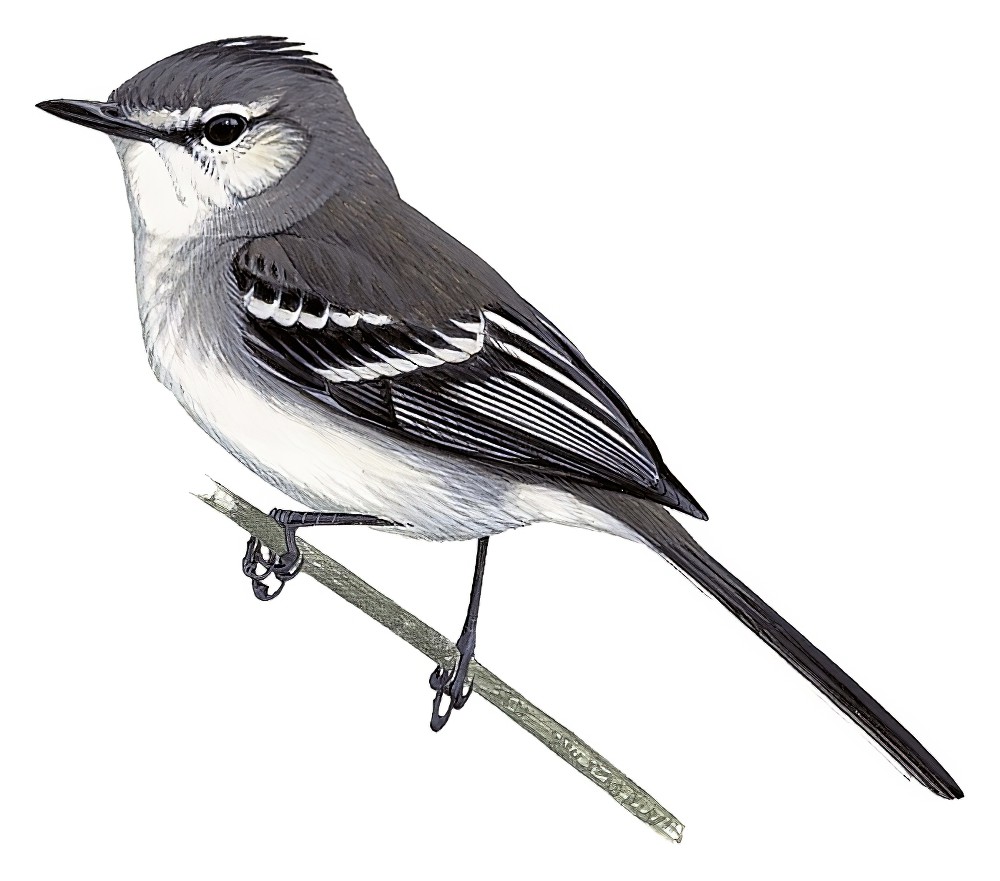White-bellied Tyrannulet / Serpophaga munda

White-bellied Tyrannulet
SCI Name:
Protonym: Serpophaga munda Orn.Monatsb. 1 p.12
Taxonomy: Passeriformes / Tyrannidae / Serpophaga
Taxonomy Code: whbtyr2
Type Locality: Bolivia alta (Samaipata, Valle Grande, Olguin); restricted to Samaipata, Santa Cruz by Zimmer, 1955, Amer. Mus. Novit., no. 1749, p. 14.
Author: von Berlepsch
Publish Year: 1893
IUCN Status:
DEFINITIONS
SERPOPHAGA
(Tyrannidae; Ϯ White-crested Tyrannulet S. subcristata straminea) Gr. σερφος serphos gnat; -φαγος -phagos -eating < φαγειν phagein to eat; "GENUS.—SERPOPHAGA. Gould. Rostrum capite multo brevius, rectum, subdeprerssum; tomiis rectis; mandibula superiore subemarginata; naribus basalibus, lateralibus, pilis mollibus antice versis partim tectis. Alæ breves, concavæ, remige quarta longissima. Cauda longiuscula subrotundata. Tarsi mediocres sqwuamis duris annulati; digitis parvis, postico mediano breviore, lateralibus æqualibus, exteriore cum mediano usque ad articulum priorem connatum. 1. SERPOPHAGA PARULUS. Gould. ... 2. SERPOPHAGA ALBO-CORONATA. Gould. ... This bird, like the last species, generally moves in very small flocks. Its habits, I presume are also very similar; for I state in my notes that it closely approaches to our tit-mice in general manners and appearance. 3. SERPOPHAGA NIGRICANS. Gould." (Gould in Darwin 1839); "SERPOPHAGA Gould, 1839 F— Serpophaga albocoronata Gould, 1839; type by subsequent designation (G. R. Gray, 1855, Cat. of the Genera and Subgenera of Birds, p. 50). = Muscicapa straminea Temminck, 1822." (Dickinson & Christidis (eds.) 2014, 45).
Var. Serphophaga.
Synon. Holmbergphaga, Muscicapara, Phrenotriccus, Ridgwayornis, Taczanowskia.
munda
L. mundus elegant, neat.
UPPERCASE: current genus
Uppercase first letter: generic synonym
● and ● See: generic homonyms
lowercase: species and subspecies
●: early names, variants, mispellings
‡: extinct
†: type species
Gr.: ancient Greek
L.: Latin
<: derived from
syn: synonym of
/: separates historical and modern geographic names
ex: based on
TL: type locality
OD: original diagnosis (genus) or original description (species)












